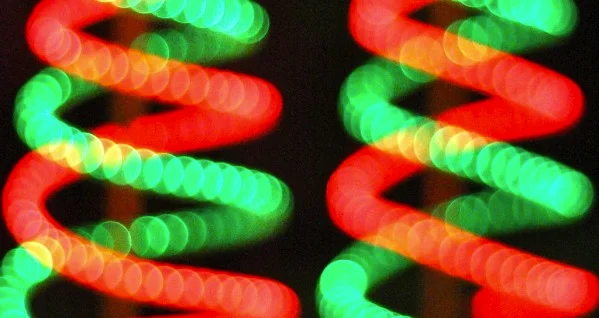Author: Neel Patel
Institution: Virginia Polytechnic Institute and State University
Date: March 2012
01 December 2011 - The idea of using one disease to fight another may seem like the crazy dreams of mad-scientists. Believe it or not, however, this may be the way cancer is treated in the near future. In recent years, oncologists all over the world have been looking toward using viruses to fight tumors.
When a virus preferentially infects cancer cells, it is said to be oncolytic, and can lead to destruction of the cancer via viral pathogenesis. Regression of certain cancers (such as Burkitt’s lymphoma) in the face of viral infections was first observed in the mid-20th century. Around this time, the field of virotherapy, the official name for treating cancers with viruses, began to take off. Unfortunately, technological limits made viral treatments unpredictable and non-specific, putting patients at risk.
With the advent of genetic engineering, however, scientists can now manipulate viruses to be more specific for receptors typically expressed by cancerous cells.
“If you compare virotherapy to other forms like chemotherapy and radiation, those other forms work, but unfortunately they destroy much of the normal, healthy tissue in the process,” said Dr. John Bell of Ottawa Hospital Research Institute and the University of Ottawa. “Viruses are so selective and can be used to attack the cancer while leaving the normal tissue unharmed.”
“It’s a very hot area of research right now,” says Dr. Sally Paulson, a professor of virology at Virginia Tech. “Results from recent studies have been very encouraging.”
What has been arguably the biggest breakthrough in virotherapy comes from a recent study published in Nature last month. Bell and his team of researchers reported the results of the world’s first viral therapy trial in cancer patients. The virus, named JX-594, was developed by Jennerex Inc., and was derived from the vaccinia virus.
JX-594 was found to infect tumors in patients with advanced cancers in multiple organs without infecting normal tissue.
The same study also indicated tumor-selective expression of a foreign gene engineered into JX-594, which highlights the potential of using oncolytic viruses to direct the immune system to recognize and respond to cancer.
“The unique thing about virotherapy today is that while originally viruses would be engineered to attack the cancerous cells, they can now be modified to also stimulate the immune system into identifying and responding to tumors, as well as to the blood vessels that attached to those tumors,” said Bell.
“These results are promising, especially for such an early-stage trial, with only one dose of therapy. But of course, we will need to do more trials to know if this virus can truly make a difference for patients,” he said.
Paulson emphasized the need for multiple forms of virotherapies in order to really become a burgeoning form of treatment.
“You have to take into account the nature of the cancer when engineering a viral treatment. One virus will not work on every type of cancer. Much of what makes a virus effective at oncolysis has to do with how much new genetic information can be loaded inside.”
Dr. Christopher Richardson of Dalhousie Medical School in Halifax, Nova Scotia, Canada and his research team recently discovered that a cell marker expressed on many different tumors was also a receptor for the measles virus. The findings, reported in PLoS Pathogens in late August, open up the possibility of adapting measles to fight cancer.
“An attenuated form of the virus could be used that would allow it to recognize the specific receptor being expressed by the tumor while ignoring other tissue,” said Richardson. “The attenuated virus should only grow in cancer cells since their innate immunity is almost always compromised anyway.”
Penn State College of Medicine researchers have found an oncolytic virus, Adeno-associated virus type 2 (AAV2), that has the potential to kill breast cancer cells within seven days. The virus regularly infects humans but causes no disease.
“Because [breast cancer] has multiple stages, you can’t treat all the women the same,” said Pennsylvania State University professor of microbiology and immunology Craig Meyers. “Our study shows that AAV2, as a single entity, targets all different grades of breast cancer.”
The issue of cancer stem cells is something oncologists struggle with. “Cancer stem cells are essentially mother cells,” explained Dr. Patrick Lee, also based at Dalhousie Medical School. “You can kill all the regular cancer cells in a tumor, but as long as there are cancer stem cells present, disease will recur.”
Lee published a study in 2009 in Molecular Therapy that demonstrated the Respiratory Enteric Orphan Virus’ ability to destroy these cancer stem cells. Naturally occurring, the virus is very specific for both cancer cells and cancer stem cells and does not harm normal tissue.
Like any form of medical treatment, however, there are risks associated with virotherapy, such as the possibility of viral infection.
“Of course there is always the potential for a virus to be able to cause illness,” said Paulson. “But people are willing to take a chance. Viral therapy could help a lot of patients who have run out of all other options.”
Researchers are very excited about the potential for virotherapy, but have been moving slowly and carefully to ensure that all aspects of the treatment have been observed. Such a radical new form of treatment demands very thorough and rigorous testing. Bell mentioned that one particular treatment could be approved for use in patients within a year: Biovex Inc.’s OncvoVEX GM-CSF.
Bell is quick to stress his and his colleagues’ belief that virotherapy is “a very, very safe form of treatment.”
“It will take time going through the clinical process, as well as making sure the public is well informed about this kind of therapy. But the potential of virotherapy in treating cancer is something we’ve never seen before.”
This science feature article was written under the guidance of JYI Science Writing Mentor Christie Wilcox


